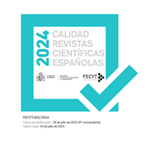HAARP conspiracy: Analysis of its role in the 2023 Turkey & Syria earthquakes on Twitter
Resumen
Twitter (actualmente "X") es un terreno fértil para la difusión de desinformación, con especial atención a las teorías conspirativas, sobre todo las relacionadas con el programa de radiocomunicaciones HAARP. Este estudio examina una teoría conspirativa que vincula este proyecto con los terremotos de 2023 en Turquía y Siria. Rastreando la palabra clave "HAARP" en Twitter del 4 al 20 de febrero de 2023 en 11 idiomas, analizamos más de 500.000 tuits utilizando teoría de redes, análisis estadístico, cuantificación de emociones y polaridad, procesamiento de lenguaje natural y metodología Disarm. Los resultados muestran un patrón consistente en todos los idiomas, donde los aspectos emocionales contribuyen significativamente a la difusión. El estudio concluye que la campaña de desinformación opera globalmente con una estrategia definida, incorporando matices locales. La metodología Disarm se considera adecuada para analizar este tipo de campañas.
Descargas
Descarga artículo
Licencia
La revista Estudios sobre el Mensaje Periodístico, para fomentar el intercambio global del conocimiento, facilita el acceso sin restricciones a sus contenidos desde el momento de su publicación en la presente edición electrónica, y por eso es una revista de acceso abierto. Los originales publicados en esta revista son propiedad de la Universidad Complutense de Madrid y es obligatorio citar su procedencia en cualquier reproducción total o parcial. Todos los contenidos se distribuyen bajo una licencia de uso y distribución Creative Commons Reconocimiento 4.0 (CC BY 4.0). Esta circunstancia ha de hacerse constar expresamente de esta forma cuando sea necesario. Puede consultar la versión informativa y el texto legal de la licencia.










